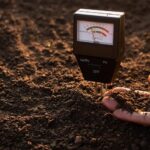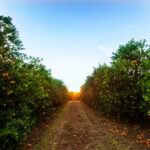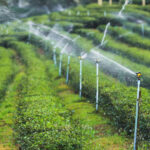Dry beans (Phaseolus vulgaris) are a valuable crop, providing a rich source of protein and essential nutrients. However, growing beans in high-rainfall areas presents challenges such as increased disease risk, poor drainage, and lower yields due to excessive moisture. Choosing the right bean varieties that can withstand wet conditions is key to successful cultivation. Below are some of the best dry bean varieties suited for high-rainfall regions.
1. Navy Beans (White Beans)
Navy beans are a great option for high-rainfall areas because they mature quickly and have good disease resistance. They are less prone to fungal infections, making them a reliable choice for farmers in wet conditions.
2. Red Kidney Beans
These beans are known for their resilience in humid environments. They have moderate resistance to common fungal diseases such as anthracnose and root rot, which are common in high-rainfall areas. Proper drainage and staking can further improve their performance.
3. Pinto Beans
Pinto beans are highly adaptable and can tolerate excess moisture better than other varieties. They have good resistance to bacterial blight and fungal diseases, making them a suitable choice for wet climates.
4. Cranberry Beans
Cranberry beans are well-suited to regions with high rainfall due to their strong root systems and tolerance to excess moisture. They are also resistant to common bean diseases, improving their survival rate in humid conditions.
5. Black Beans (Turtle Beans)
Black beans have a natural resistance to moisture-related diseases such as rust and bacterial blight. They perform well in high-rainfall areas as long as they are planted in well-drained soils to prevent waterlogging.
6. Mottled Sugar Beans
This variety is widely grown in wet climates because of its high yield potential and disease resistance. Mottled sugar beans thrive in moderate to high rainfall areas, provided they are planted in well-aerated soils.
7. Yellow Beans
Yellow beans, such as the Katumani yellow variety, are known for their adaptability to different climates, including high-rainfall regions. They have strong stems that prevent lodging (falling over) due to excess moisture.
Tips for Growing Dry Beans in High-Rainfall Areas
- Choose Well-Drained Soils: Avoid heavy clay soils that retain water. Raised beds or ridges can help improve drainage.
- Use Disease-Resistant Varieties: High humidity increases the risk of fungal and bacterial infections, so selecting resistant varieties is crucial.
- Practice Crop Rotation: Avoid planting beans in the same field every season to reduce disease buildup.
- Ensure Proper Plant Spacing: Adequate spacing improves air circulation, reducing humidity around the plants and preventing fungal growth.
- Apply Mulch: Mulching helps control soil moisture and reduces the impact of heavy rains.
Selecting the right dry bean variety and implementing proper field management practices will help farmers achieve high yields in high-rainfall areas. With the right approach, dry beans can thrive even in wet conditions, providing a stable and profitable harvest.







